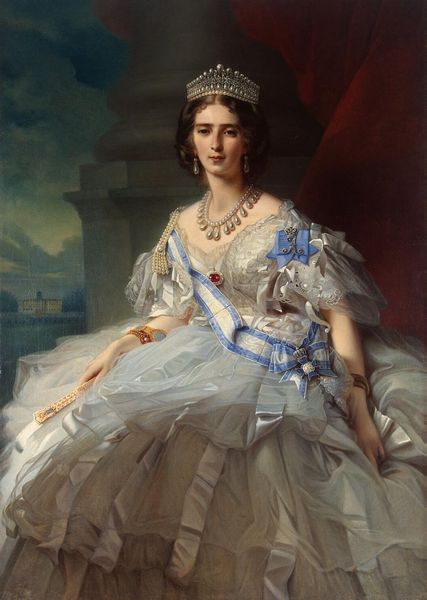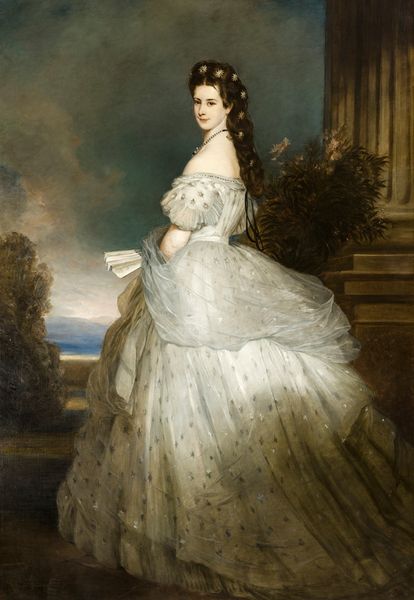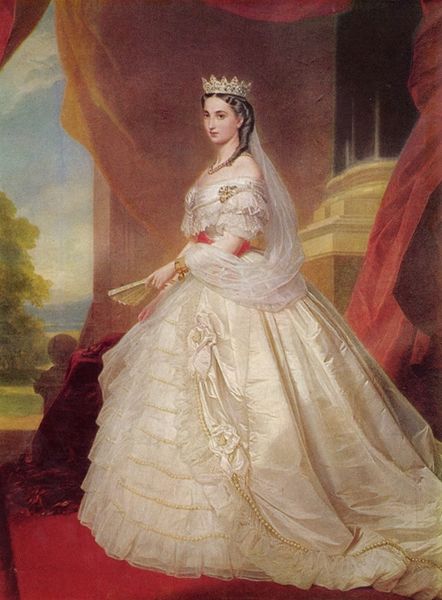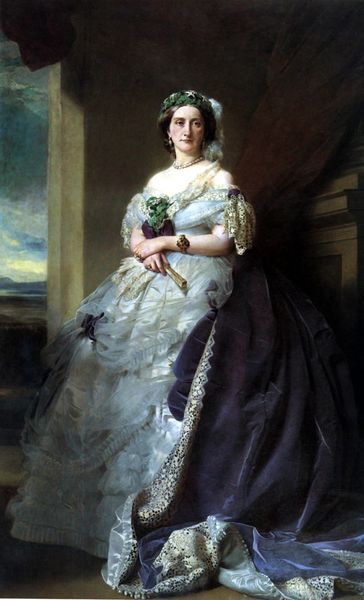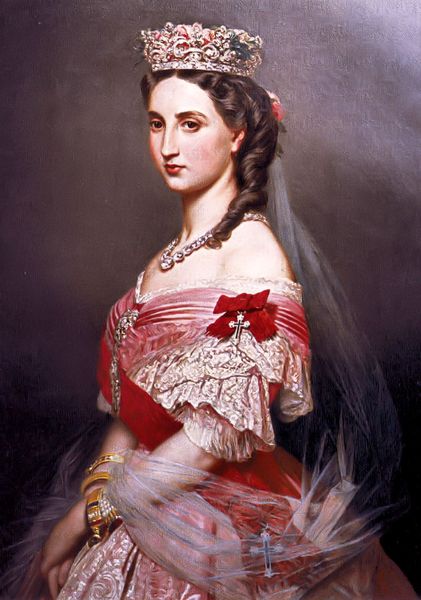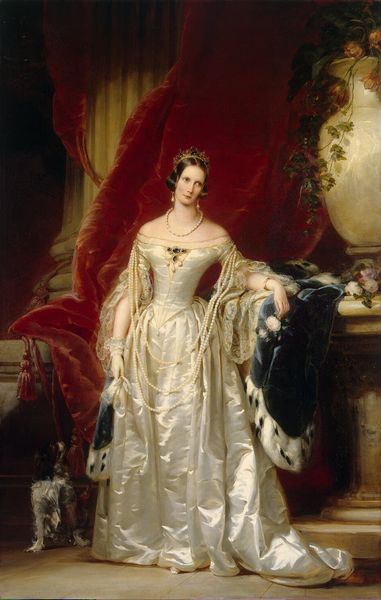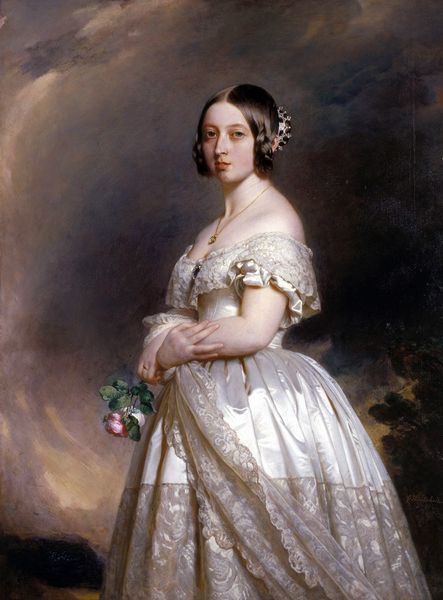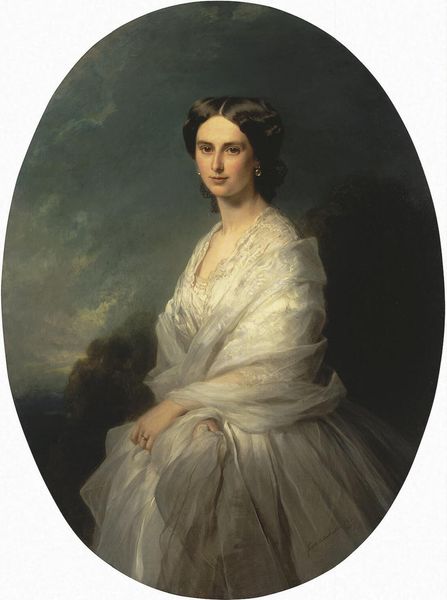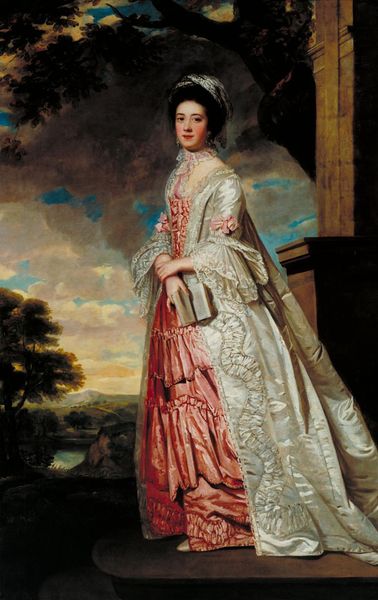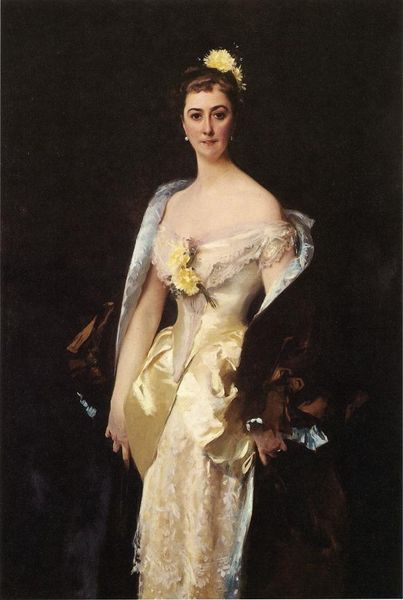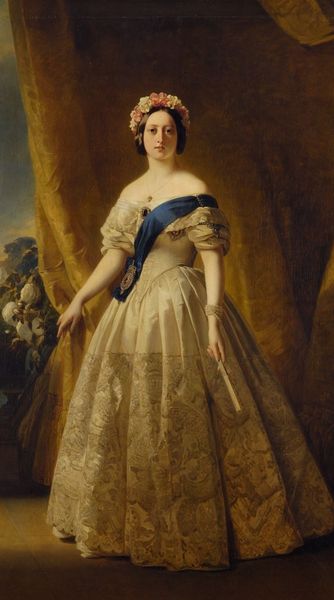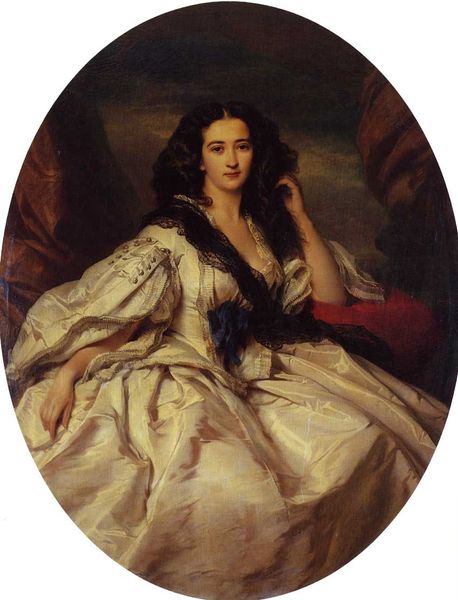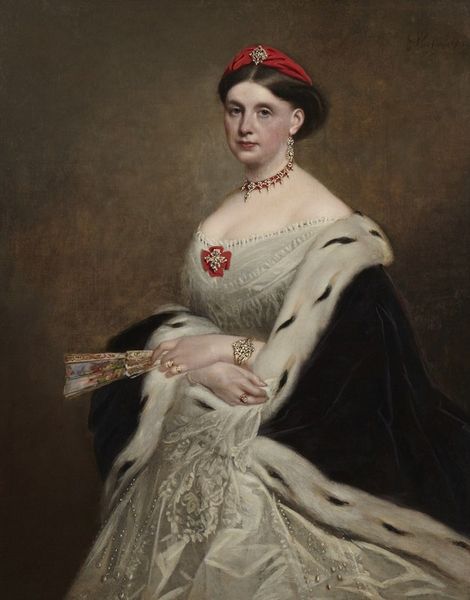
Copyright: Public domain
Franz Xaver Winterhalter painted Princess Tatiana Yussupova, capturing her in an opulent display of wealth and status. During the 19th century, portraiture served as a powerful tool for the European aristocracy to assert their dominance through visual representations of luxury and lineage. Tatiana, a member of the Russian nobility, is adorned in a lavish gown, emphasizing her elevated social position. Her serene expression and the soft, idealized rendering contribute to the construction of an image of feminine grace. However, it is important to consider the historical context of such displays of grandeur. While the aristocracy enjoyed lives of privilege, the majority of the population faced economic hardship and social inequality. Winterhalter’s portrait, while seemingly celebrating individual beauty, also reflects the complex dynamics of power and privilege that shaped 19th-century European society. The portrait becomes a lens through which we can reflect on the ways in which identity is constructed and communicated through visual culture.
Comments
No comments
Be the first to comment and join the conversation on the ultimate creative platform.
